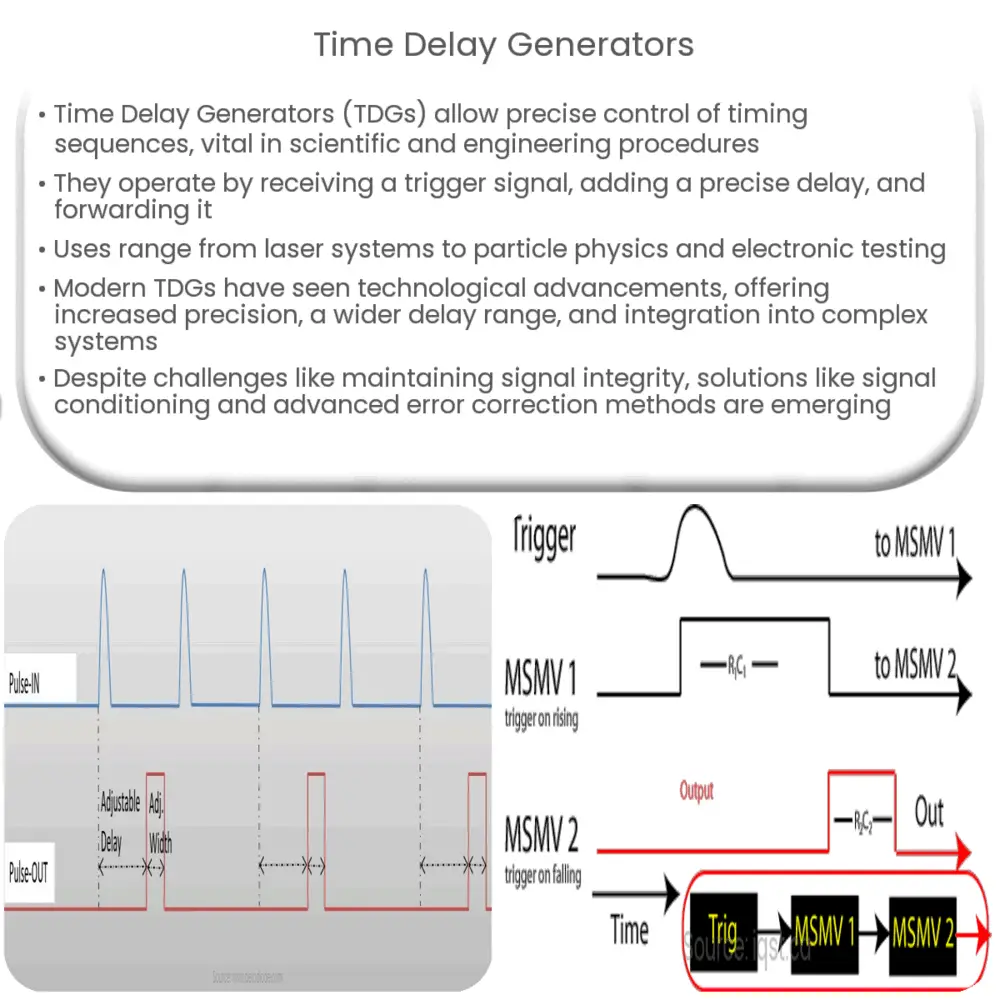Explore the functioning, applications, advancements, and future trends of Time Delay Generators in this comprehensive guide.

Understanding Time Delay Generators
A Time Delay Generator is an essential tool in many scientific and engineering fields. It allows precise control of timing sequences, and is often used in intricate procedures where even a nanosecond can make a significant difference. As the name suggests, this device generates a delay in time, primarily for the operation of other devices or systems.
Working Principle of Time Delay Generators
Time Delay Generators work on the principle of receiving a trigger signal, adding a precise, pre-set delay to it, and then passing the signal on to the subsequent device or system. This delay could range from a few nanoseconds to several seconds, depending on the specific requirement. The trigger signal can be externally or internally sourced, offering flexibility in various applications.
Components of Time Delay Generators
- Input Stage: The input stage is designed to accept trigger signals from various sources. It conditions these signals to a standard form which is acceptable for the generator.
- Delay Line: This is a crucial component that creates the desired delay. Its effectiveness and precision are central to the performance of the device.
- Output Stage: The output stage transmits the delayed signal to the destination device or system.
Applications of Time Delay Generators
Time Delay Generators find widespread usage in various sectors, some of which are:
- Laser Systems: In pulsed laser systems, precise timing control is necessary to synchronize various parts of the system, such as pump sources and Q-switches.
- Particle Physics: In particle accelerators, a time delay generator can control the beam injection process. Its high precision is essential to align the beam with the accelerator’s radio frequency field.
- Electronic Testing: In electronic system testing, time delay generators help to emulate real-world scenarios by introducing specific delays in signal transmission.
The above applications illustrate the importance of Time Delay Generators in scientific and engineering practices. In the following part, we’ll delve deeper into the intricacies of their working and look into the latest developments and future trends in this technology.
Advancements in Time Delay Generators
With the rapid progression of technology, Time Delay Generators have seen substantial advancements. Modern units are not only more precise, but also offer a wider range of delay times, and are increasingly miniaturized for seamless integration into complex systems. Some are even programmable, offering customizability to cater to specific needs and applications. For instance, digital time delay generators have been developed that can be controlled and programmed using computer software.
Future Trends
As we move towards an era defined by quantum computing and photonics, the demand for precise and customizable Time Delay Generators will only increase. We can anticipate further miniaturization and integration with other devices, with a focus on energy efficiency and reduced signal distortion. Enhanced programmability will also be a focus, enabling users to set more complex sequences of delays and triggers to suit specific needs.
Challenges and Solutions
Despite the advancements, some challenges persist. For example, maintaining signal integrity over long delays is a common issue. However, solutions are being developed. Techniques like signal conditioning and advanced error correction methods are being employed to tackle this problem. Another challenge is the heating issue caused by high-speed operation. To address this, manufacturers are adopting innovative heat dissipation solutions and energy-efficient designs.
Conclusion
In conclusion, Time Delay Generators play a crucial role in a myriad of fields ranging from physics to electronics testing, aiding in precise synchronization and control. Their inherent value and increasing versatility are driving constant evolution and innovation. Despite certain challenges, the industry is proactively developing solutions to overcome them. As we venture further into the realms of high-speed data transmission, photonics, and quantum computing, the Time Delay Generator will undoubtedly be a key player, enabling precision, synchronization, and control in a time-critical world.

